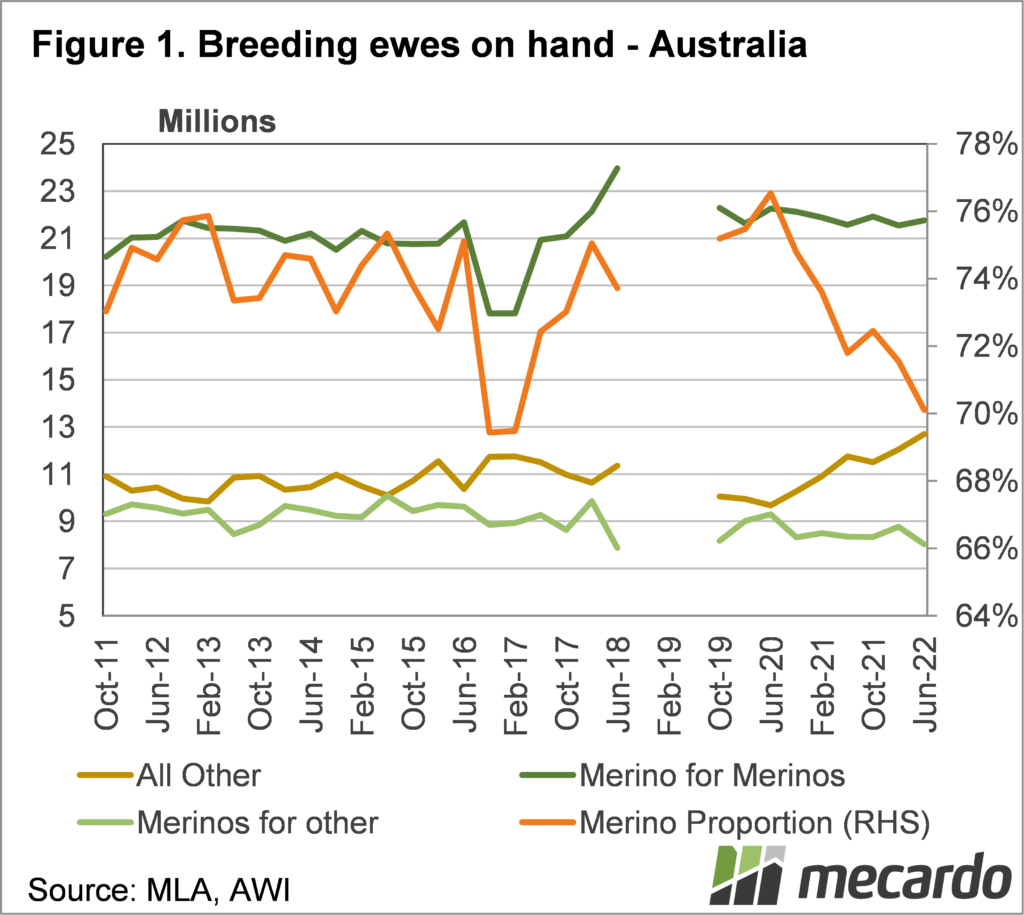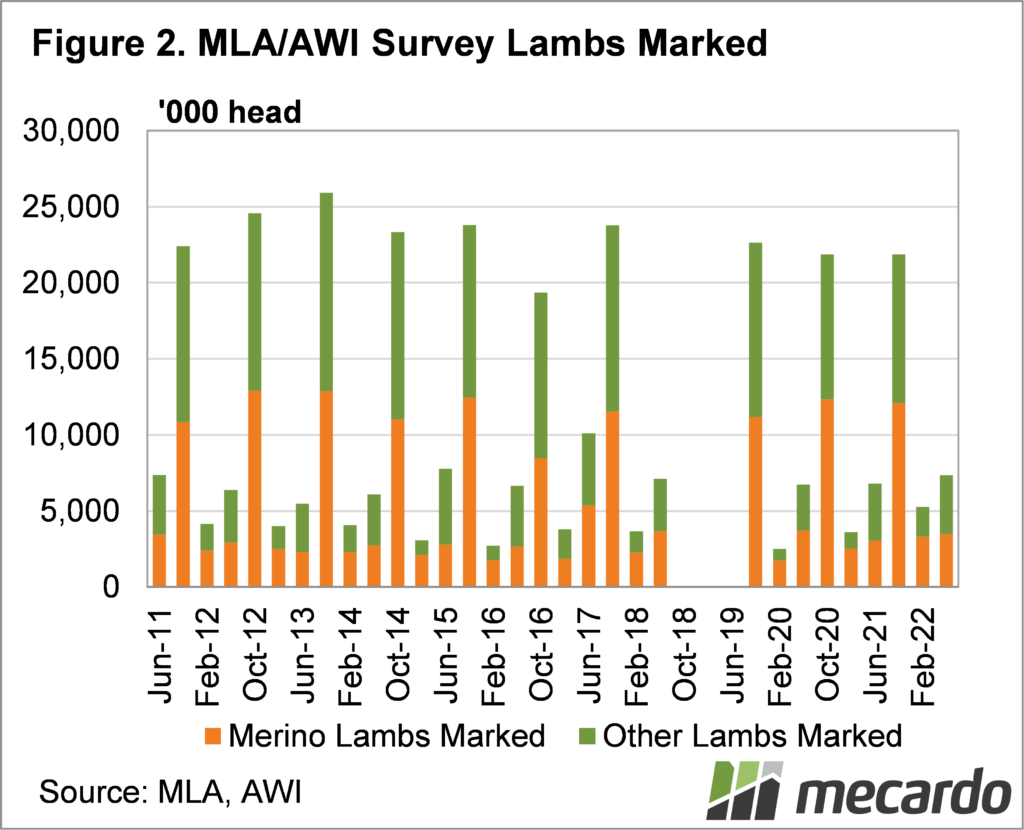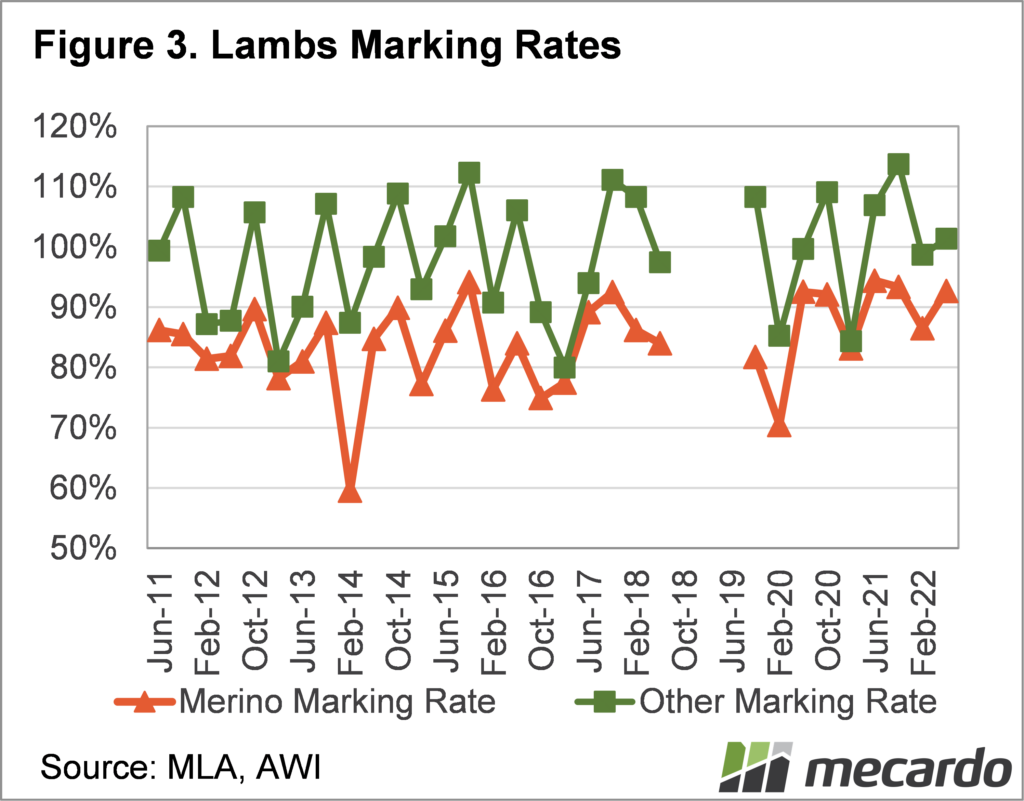The results of the June MLA and AWI Wool and Sheepmeat Survey have recently been released. The flock growth which has been expected was confirmed, and there were better marking rates during autumn and the early winter. The Merino ewe flock remains stagnant, but there were more lambs marked.
The survey is conducted every 4 four months, and we can compare numbers against the previous survey for breeding flocks, and previous years for marking rates.
Figure 1 shows the breeding ewe flock broken down into Merinos which are to be joined to Merinos, Merinos which are to be joined to others, and ‘other’ sheep. The survey has a number of categories which we roll into ‘other’. Most are first cross and composite ewes, and all are pretty much meat breeds.
The flock rebuild seems to still be focused on ‘other’ breeds, rather than Merinos. The Merino ewe flock to be joined to Merino lambs increased by 1% on both the February survey and last year. Merinos for other rams, either terminals or for breeding first cross ewes, were down 8.5% on the February survey, and 4% on last year.
‘Other’ breeding ewe numbers increased by 5.4% on the February survey, and 8% on the June 2021 survey. Figure 1 shows ‘other’ ewes are now at a record high of nearly 12.7 million head. The increase in ‘other’ ewes was driven by first cross ewes and shedding breeds. In fact, according to the survey, shedding ewe numbers have more than doubled since June last year.
The number of lambs marked is the other important measure of production we take out of the survey data. Figure 2 shows Merino lambs marked, and ‘other’ lambs marked. Growers joined 16% more merinos in June, to produce 14% more lambs.
There were 9% more ‘other’ ewes joined than last year to lamb in the four months to June. But they only produced 3% more lambs.
Figure 3 shows marking rates were down on last year, with the wet autumn and winter likely to blame. With more young ewes entering the flock, this would also reduce total average marking rates.
What does it mean?
Rising ‘other’ breeding ewe numbers will make October survey results interesting. Most lambs are born in the four months to October, and these numbers tend to drive supply through late spring and summer and into autumn.
The June marking numbers don’t suggest early lamb supplies will be much stronger than last year, with just 3% more ‘other’ lambs marked. This might be we why the store lamb market is holding strong now.
Have any questions or comments?
Key Points
- The June Wool and Sheepmeat survey showed strong growth in ‘other’ ewes.
- Merino ewe numbers were relatively steady.
- More lambs were marked in the four months to June, but the impact on supplies will be small.
Click on figure to expand
Click on figure to expand
Click on figure to expand
Data sources: MLA, AWI















